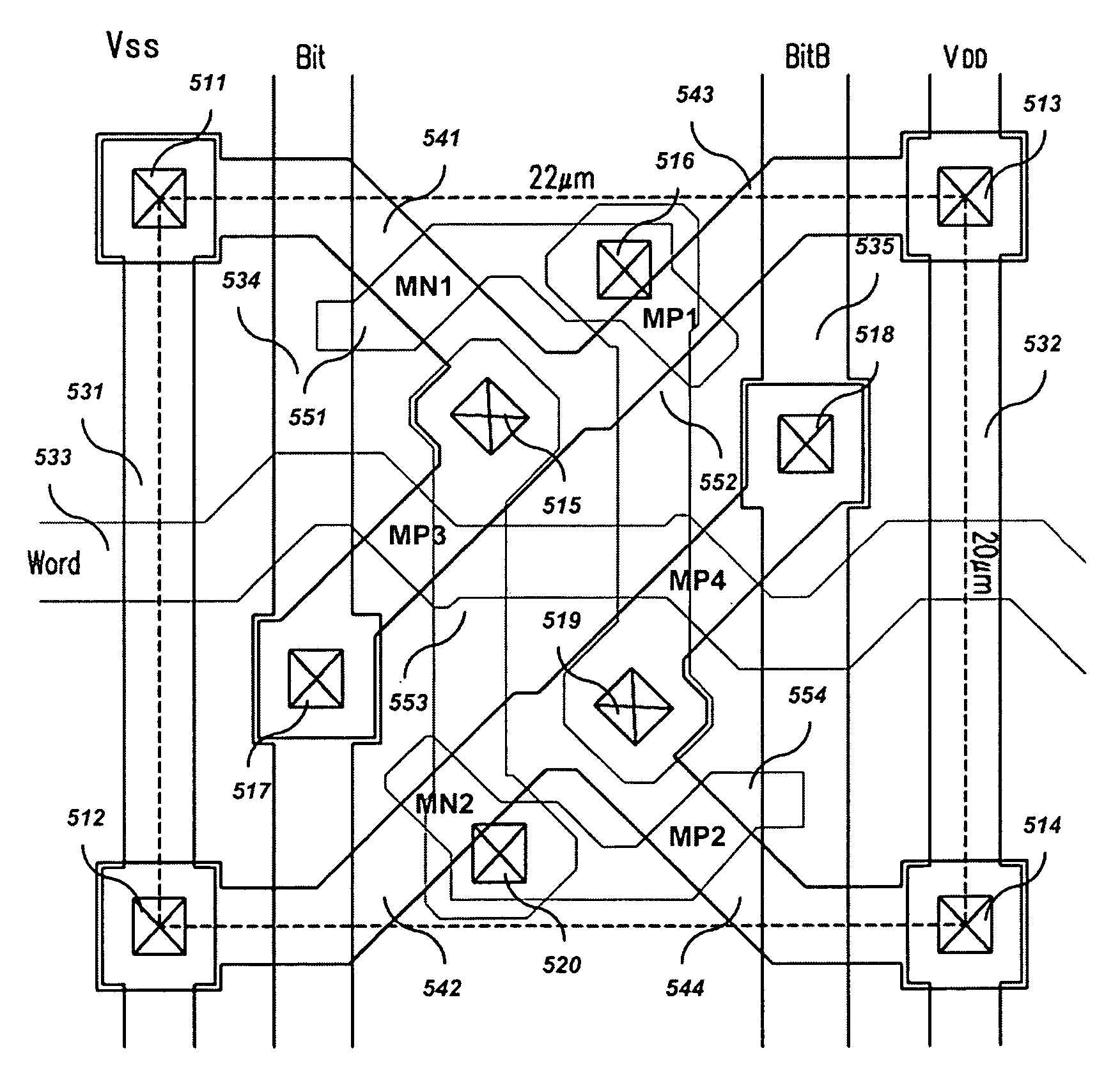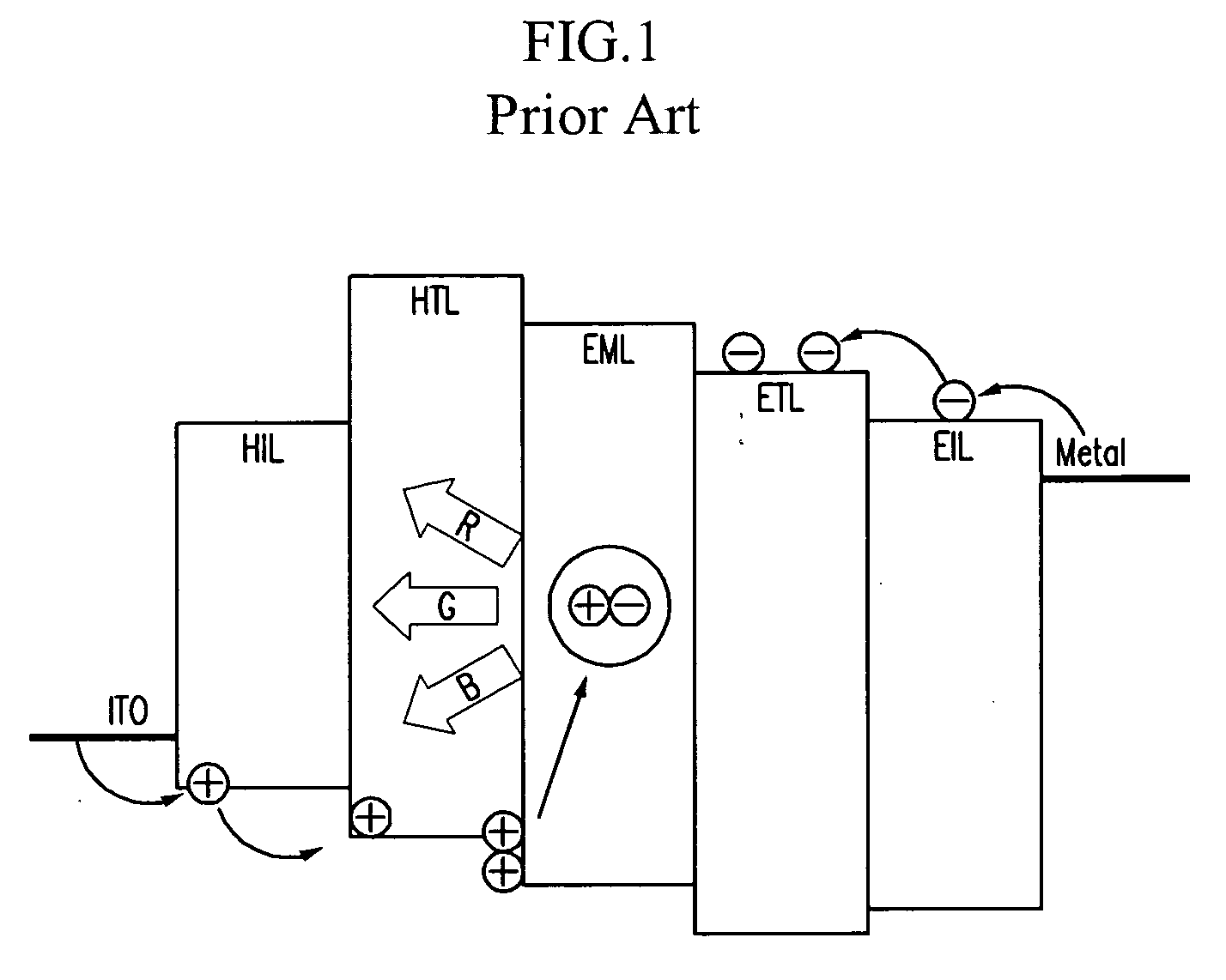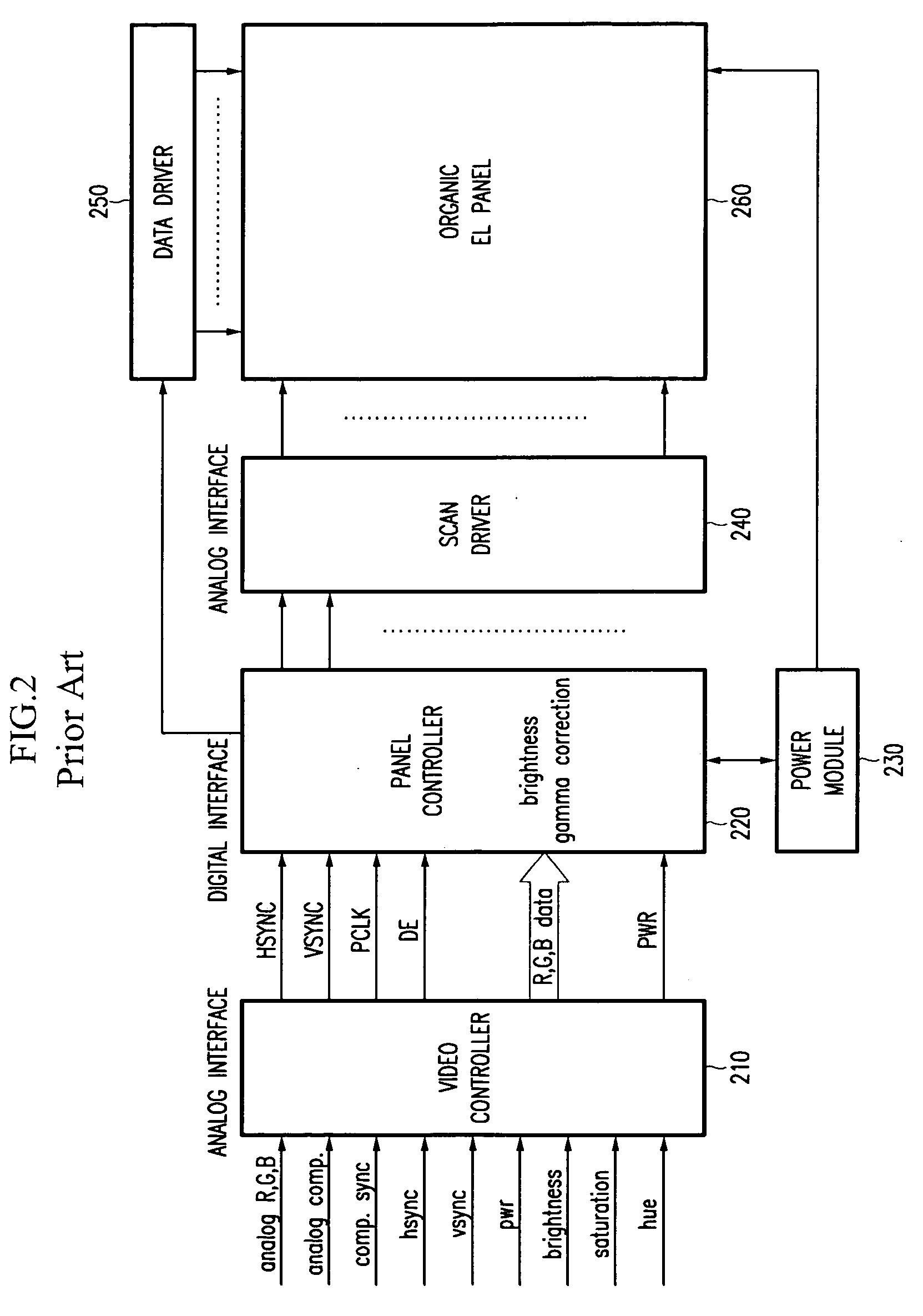SRAM core cell for light-emitting display
- Summary
- Abstract
- Description
- Claims
- Application Information
AI Technical Summary
Benefits of technology
Problems solved by technology
Method used
Image
Examples
Embodiment Construction
[0044] Hereinafter, a SRAM core cell for a light-emitting display according to an embodiment of the present invention will be described in detail with reference to the accompanying drawings.
[0045] Referring to FIG. 4, a SRAM core cell includes two flip-flop circuits for memory (e.g., MP1 and MN1, and MP2 and MN2), and two switches (e.g., MP3 and MP4). By applying pulses to word lines to turn a cell transistor on, data transfer is activated between a bit line pair (“Bit” and “Bitb”) and flip-flops. When writing data, a high voltage is applied to one side of the bit line pair, a low voltage being applied to the other side. This is transferred to a memory node (a common source / drain node of MP1 and NM1, and a common source / drain node of MP2 and MN2) to memorize binary information. When reading data, a voltage sustained at the bit line pair is detected in correspondence to the voltage of nodes and transferred to the exterior. Unlike the DRAM, the SRAM stores data without a refresh oper...
PUM
 Login to View More
Login to View More Abstract
Description
Claims
Application Information
 Login to View More
Login to View More - R&D
- Intellectual Property
- Life Sciences
- Materials
- Tech Scout
- Unparalleled Data Quality
- Higher Quality Content
- 60% Fewer Hallucinations
Browse by: Latest US Patents, China's latest patents, Technical Efficacy Thesaurus, Application Domain, Technology Topic, Popular Technical Reports.
© 2025 PatSnap. All rights reserved.Legal|Privacy policy|Modern Slavery Act Transparency Statement|Sitemap|About US| Contact US: help@patsnap.com



